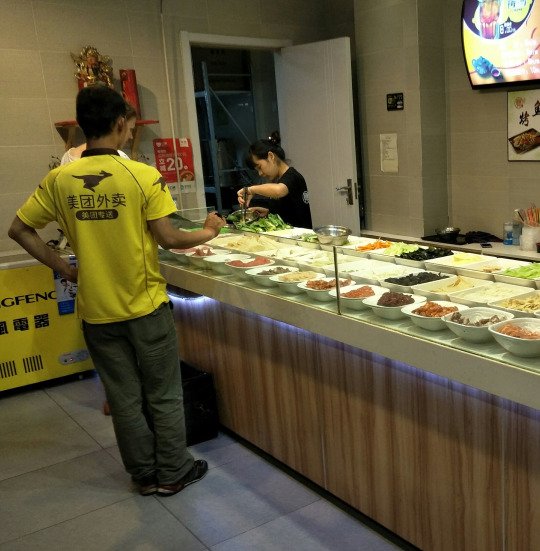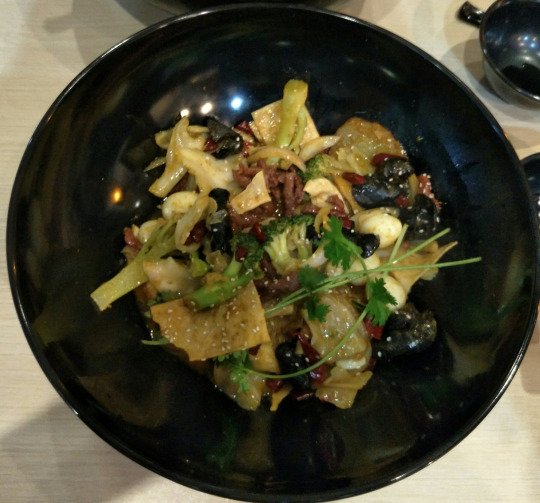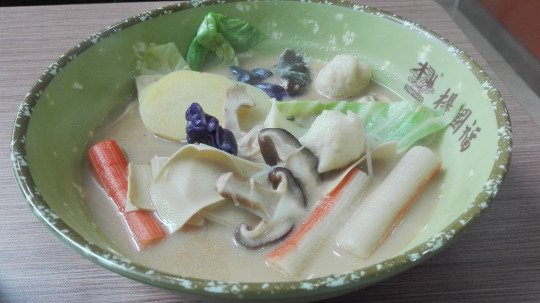
In China, there are two types of restaurants that are convenient to expats who can't speak Chinese very well. They are mala tang 麻辣烫 and mala xiang guo 麻辣香锅. These places often work like a salad bar. You walk in look an assortment of ingredients and pick what you want. Unlike a salad bar, you then hand your selections to the staff. They weigh everything to figure a price and hand it to a cook. You go to your table and wait for a bowl to be brought to you. There is no Chinese language menus to struggle with, and interaction with the staff is simple as pointing at what you want. While mala tang and mala xiang guo are similar in set up, the results are not the same.

This is mala xiang guo. The meat and vegetables you pick are stir fried -- quite often with garlic and red peppers. It can be extremely spicy, but if you say bu yao la 不要辣, the cook will hold back on the peppers.

This is mala tang. Unlike it's counterpart, it's a soup. Like with mala xiang guo, the resulting taste depends on what you select. The main flavor, though, comes from the broth. The characters for "mala" in both dishes means "hot and numbing." Yet, the broth here can also be spiced down a bit if you ask.
There is one word of warning a foreigner should heed if you head into one of these places. If an ingredient looks unfamiliar, do not ask for it. My best friend is a vegetarian, and she has mistaken duck blood cubes for brown tofu and cow stomach as a vegetable. Sometimes, intestines can look like tofu, since China has an endless variety of types and shapes of bean curd. Other than that, knowing these places adds to the convenience of everyday living. Another bit of advice is this: if a place is always empty, skip it. There is likely a good reason why the locals are not eating there.
(image credits: me)
